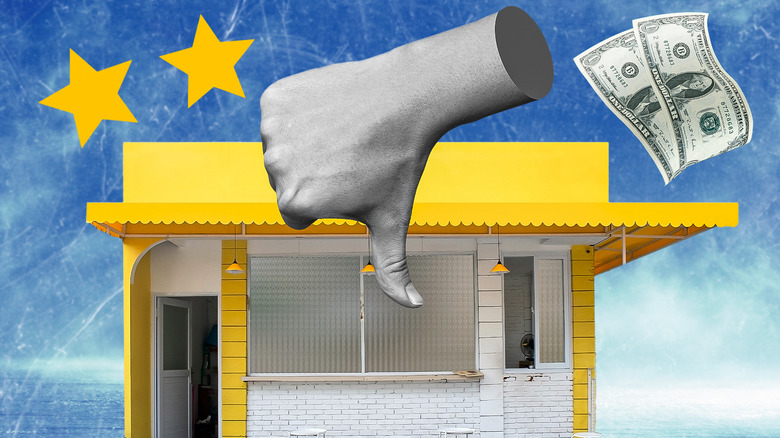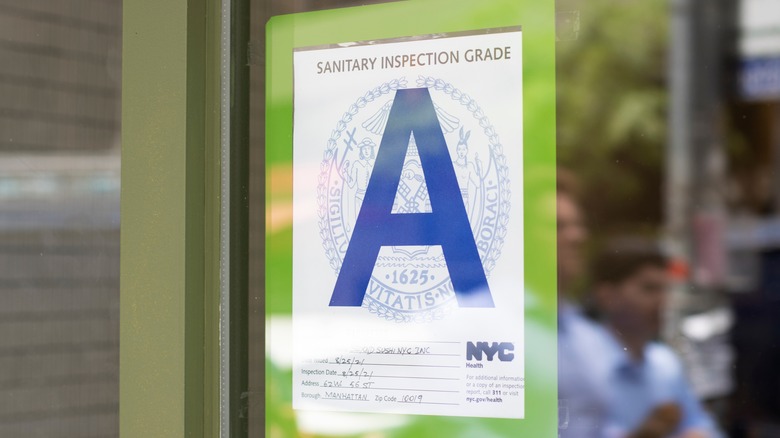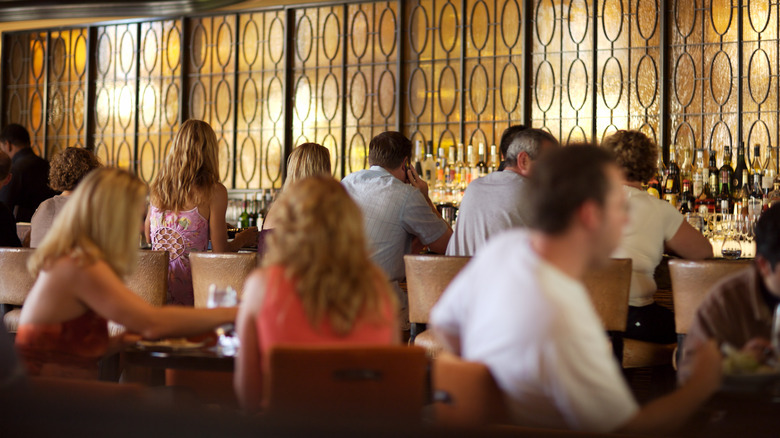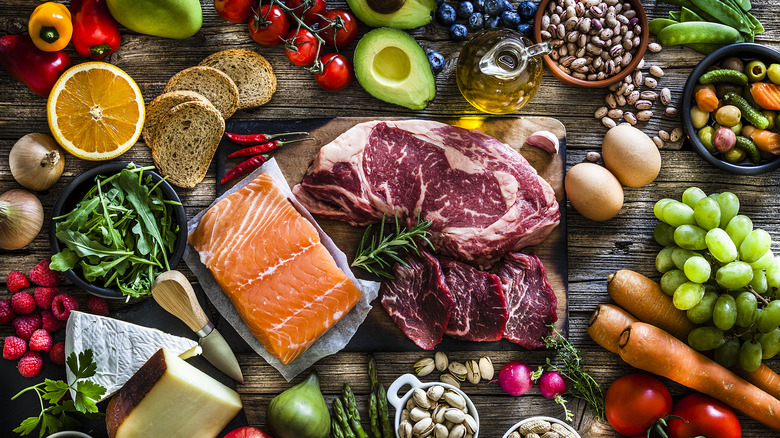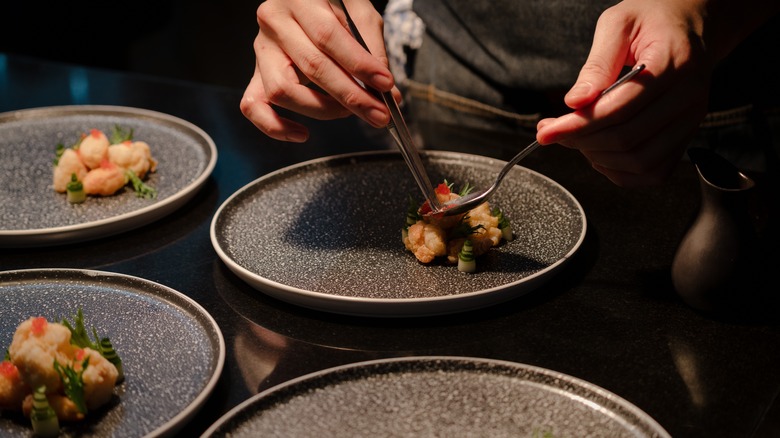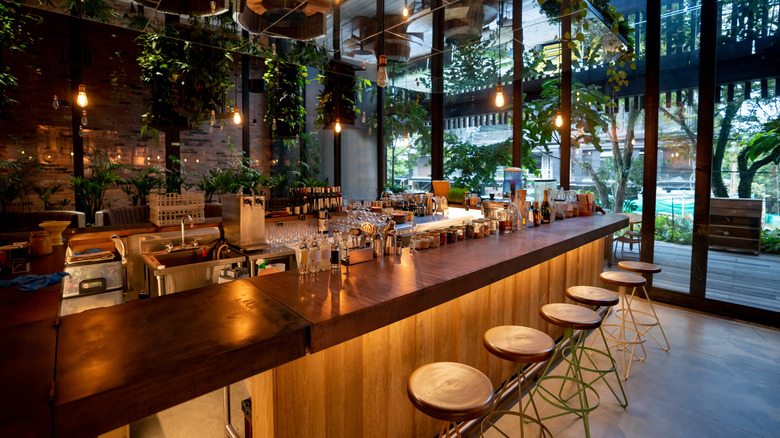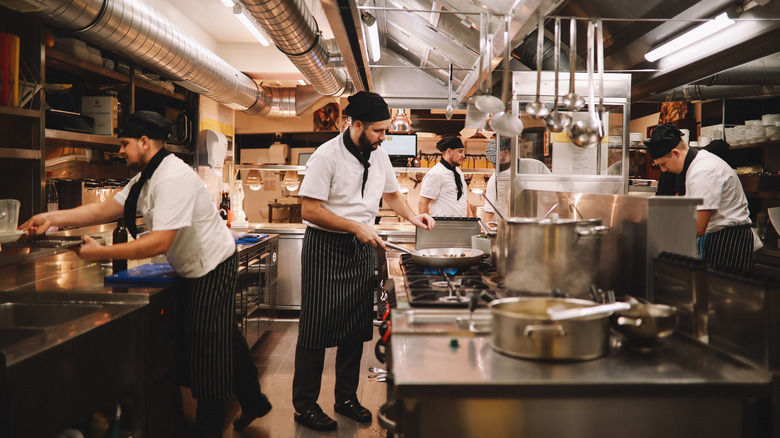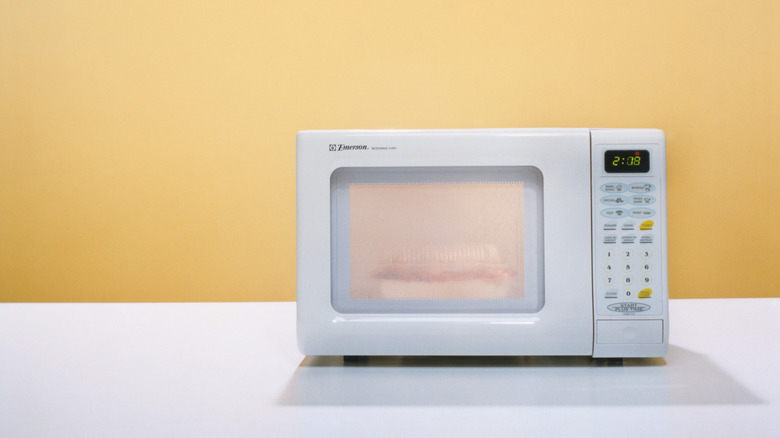Signs Of A Bad Restaurant You Shouldn't Ignore
Dining out should be a pleasure, not a gamble. With so many options available, however, it's easy to end up at a restaurant that falls short of your expectations. Understanding what makes a dining experience truly enjoyable involves more just reviewing a menu. After all, going to a restaurant isn't only about the food. The whole vibe of the place comes into play, from the ambiance to the service. Recognizing the signs of a bad restaurant can really help you avoid disappointing dining experiences and make sure every meal out is a good one. Some warning signs are obvious, but others are a bit harder to notice.
To uncover the red flags of a restaurant — one that might offer subpar food, service, or cleanliness — we turned to Chanel Sneide, a seasoned restaurant manager at Stella Van Buren in Milwaukee, Wisconsin. With over a decade of experience in the fine dining industry, Sneide brings a wealth of knowledge on what separates an exceptional restaurant from a bad one. Her practical advice is meant to help you spot which restaurants you should frequent and which you should probably avoid altogether.
Low health department grade
One of the most straightforward indicators of a restaurant's hygiene standards is its health department grade. "You always want to check the Official Health Department Grade of the restaurant — this normally is placed in a window or at the front of the restaurant for all the public to view. If it is less than an A-, be cautious," advises Chanel Sneide. The grade provides a snapshot of the restaurant's adherence to health and safety regulations. An A- generally indicates that the restaurant has met or exceeded the basic standards for cleanliness, such as proper hand-washing and food handling, sourcing ingredients from approved suppliers, and effective cleaning and sanitization procedures. A lower grade suggests potential issues in these areas that could seriously compromise your dining experience, or worse, make you sick.
The importance of these health grades cannot be overstated. According to the Centers for Disease Control and Prevention (CDC), 48 million people get sick from foodborne germs like Salmonella, norovirus, and E. coli each year, illnesses that can be the result of poor restaurant practices. Sneide's advice is simple but effective: before you settle in, take a glance at this grade. If the grade isn't high enough, it's wise to consider dining elsewhere to avoid potential health risks.
High-volume dining focus
Restaurants designed for high-volume dining often prioritize quantity over quality. "People may love Disney World for the rides and light shows, but they are notorious for the food being just okay," Chanel Sneide says. Chain restaurants and large resorts typically focus on fast service and bulk ingredients to manage large crowds efficiently. "Low-quality ingredients are almost always found at a chain or large resort. They need to buy ingredients in bulk to keep up with cost and consistency," Sneide explains. This approach is geared more toward efficiency and uniformity rather than crafting fresh, innovative dishes. In these types of establishments, the primary goal is often profit, which means serving as many people as possible while maintaining a consistent, if not always exceptional, dining experience. High turnover and standardized menus are common in these places, which can result in more generic food.
However, it's worth mentioning that not every chain or high-volume spot falls into this category — some do put in the effort to offer quality and unique dishes. As a general rule, if you find yourself at a place designed for high traffic, you might end up with a dining experience that's pretty forgettable. This is because the food often lacks the personal touch and creativity you'd find in smaller, more specialized restaurants.
Unfresh food appearance
Freshness is one of the most important indicators of quality when it comes to the food at a restaurant. Chanel Sneide sums it up perfectly: "Be sure that the food presented looks fresh, smells fresh, and the colors look correct." If your dish doesn't meet these standards, it could mean the ingredients are past their prime. For example, wilted greens and slimy veggies in a salad aren't just unappetizing — they're red flags that something's off. Fresh food should have bright, natural colors — not dull or brownish hues.
The way your food looks and smells can also tell you a lot about the restaurant's commitment to quality. Freshness doesn't just apply to whether or not food is spoiled. Every ingredient served should be at its best flavor and texture. If something on your plate doesn't look or smell right, it suggests the restaurant isn't putting enough effort into maintaining ingredient quality. Maybe food items are improperly stored, causing them to go bad faster than they should. Maybe they're cutting corners by using older or lower-quality ingredients to save on costs. In either case, if your food doesn't look or smell fresh, it's a big red flag. Good restaurants pay attention to every detail so that each ingredient contributes to a satisfying and safe dining experience.
Food presentation is sloppy
"Presentation is a huge sign that a place pays attention to detail and that they care," Chanel Sneide notes. It shows that the kitchen staff cares about the customer's experience with their meal and can also "be a hint that the chefs enjoy working there and have the discipline to put out the best quality food." To put it simply, the visual appeal of a well-arranged plate, with neatly placed portions and thoughtful garnishes, speaks volumes about a restaurant's commitment to quality.
For one, top-notch food presentation makes customers feel valued and appreciated. That time and effort put into crafting something special tend to make a meal feel more like an occasion rather than just a routine dinner out. On the flip side, "A sloppy plate with sauce spots all over shows the lack of pride in trying to show off a restaurant's culinary skills," says Sneide. This lack of effort suggests a rushed or careless approach, which can easily extend to other aspects of the restaurant's service and quality. What's more, when a restaurant invests in the artistry of presentation, it reflects a broader commitment to excellence that touches every part of its operation, from ingredient selection to the final plating. This meticulous approach can boost your confidence in how the restaurant functions overall, including things like service and hygiene.
Indifferent or unengaged staff
The demeanor of restaurant staff can significantly influence your dining experience. "Being personable and detailed is a part of hospitality," Chanel Sneide points out. "People are spending their hard-earned money and choosing your business," which means they rightfully expect to enjoy themselves. A neglectful or unengaged staff puts a damper on that. Things like "the tone in a server's voice, eye contact, and smiling" are important factors in making guests feel valued and cared for. Signs of indifference include "a lack of warmth, poorly maintained uniforms, or staff members on their phones," says Sneide. All of this can be an indication of the kind of service you'll get.
An unenthusiastic attitude can also make the meal less enjoyable, even if the food is good. If staff members are disengaged, it can lead to inattentiveness, which often means you'll wait longer for your food and end up sitting there hungry and upset. Staff should be genuinely interested in making sure you have a pleasant experience, from promptly addressing your needs to being friendly and approachable. Their enthusiasm and care are often reflected in their ability to anticipate needs, provide personalized recommendations, or quickly resolve any issues that arise, which will make the whole dining outing much more pleasant and worthwhile.
Dull or missing decor
Walking into a restaurant with bare walls and a lackluster dining area can immediately set the wrong tone for your meal. As Chanel Sneide mentions, "If you enter a space with nothing on the walls and a neglected dinner space — it may be a red flag. You do not want guests sitting down and looking around with judgment. Instead, with the right look, it can create a sense of awe." The decor of a restaurant is about aesthetics, but it's alsomore than just aesthetics. It should create an environment that complements the food and makes guests feel special, enhancing the overall enjoyment of the meal.
However, Sneide also cautions against judging a restaurant solely on its decor. "Don't judge a book by its cover. Some of the strangest places I have been to have had the best food, and at very expensive-looking places, I have been underwhelmed." This highlights an essential point: while decor can enhance a dining experience, it's not the only factor to consider. Some of the best culinary experiences can come from unexpected places where the focus is on food quality rather than flash. Still, it's often an early indication of care and attention when owners have invested time and effort into decorating the space.
Kitchen disorganization
Many restaurants have an open kitchen these days, an aesthetic that not only promotes transparency and cleanliness but also adds a dynamic, engaging element to the dining experience. It allows diners to watch the preparation of their meals, which can create a sense of connection with the food and the chefs. Plus, it can improve the overall atmosphere of the restaurant by adding energy and excitement to the space. That being said, one of the lesser-known perks of an open kitchen for diners is that it can reveal a lot about a restaurant just by looking at it, especially if it's disorganized.
Sneide warns that poor kitchen organization may mean the restaurant is cutting corners on food safety or hygiene practices. In a high-quality establishment, everything in the kitchen should be "labeled and separated and put away correctly," says Sneide. If not, it can lead to cross-contamination, with allergens like peanuts or gluten mixing with other foods or ingredients being improperly stored. For instance, if a restaurant is unsure about whether its dishes are gluten-free, "that could be a red flag," says Sneide. It indicates the kitchen staff might not be adhering to proper food handling procedures, like keeping allergens and non-allergens separate.
Visible mess or lack of cleanliness
One of the clearest signs that a restaurant may not be up to standard is visible messiness or lack of cleanliness in the dining area. This can manifest in many ways, from dirty floors to un-bussed tables to cluttered service areas, and it immediately raises concerns about how the restaurant is being managed. Poor hygiene practices can lead to serious health risks, and if a restaurant can't keep its dining area clean, it's likely that the kitchen isn't any better behind the scenes.
Beyond hygiene, cleanliness also affects the dining experience. A messy restaurant can make diners feel uncomfortable and question the quality of the food they're about to eat. On top of that, an untidy restaurant could be a sign of bad service. Chanel Sneide points out that if the "staff is chatty while tables stay messy," they're probably not all that focused on giving guests attentive or quality service. While she doesn't think an un-bussed table is a big deal at first, if it's not cleaned up soon, it might be a sign of "lazy service." If you see a restaurant that's visibly unclean, you might want to think about reconsidering your choice to dine there.
Consistently negative online reviews
In the age of the internet, online reviews play a significant role in shaping public perception of a restaurant. In fact, a study from the Harvard Business School indicates that a one-star increase in a restaurant's Yelp rating can lead to a revenue increase between five and nine percent. This highlights how much weight online reviews carry in today's restaurant industry, but the trick is to know how to interpret reviews. According to Chanel Sneide, "If you read a handful of reviews that say, this was not worth the money, you could consider it." When you notice a pattern of complaints about the same problems — whether it's poor service, subpar food, or poor price-to-quality ratio — those issues are likely real and not just isolated incidents.
However, Sneide also advises that while online reviews are useful, they should be taken with a grain of salt. "One person's experience does not define the restaurant," she says, pointing out that an occasional bad review could simply be the result of a particularly picky customer or someone who was having a bad day. The moral of the story here is that it's wise to read a variety of reviews and consider the overall consensus before deciding whether or not to dine at a restaurant.
Excessive pricing compared to competitors
When a restaurant's prices are significantly higher than those of similar ones in the area, it can raise some red flags. Elevated prices might be a tactic to create a false sense of exclusivity or value, leading diners to believe they're getting something special when, in reality, the experience or quality may not justify the cost. Chanel Sneide advises that it's important to compare the prices of a restaurant's nearby competition to gauge whether the pricing is fair. For instance, if you're planning to dine at a steakhouse, Sneide suggests, that it may not be a bad idea to "compare prices of other steakhouses nearby."
However, it's crucial to recognize that sometimes higher prices are justified. A restaurant that offers a truly unique dining experience — such as a farm-to-table concept where ingredients are sourced directly from local farms, or a chef's tasting menu that features carefully crafted, exclusive dishes — might charge more due to the quality and effort involved. As Sneide points out, "The reason something may be more expensive at a small business is because they use quality ingredients." If a restaurant is in an expensive area, its prices might be higher simply because its rent is higher. On top of that, some restaurants focus on personalized services, like custom wine pairings or tableside preparations, which add value to the overall experience. Regardless, understanding the context behind the pricing can help you determine whether the extra cost is truly worth it.
Microwave in the kitchen
In a restaurant, the presence of a microwave in the kitchen can be a subtle yet telling detail. It might indicate that the food is reheated from pre-packaged or frozen sources, which can lead to inconsistent quality and suggest that the kitchen isn't focused on fresh, made-from-scratch dishes. This means the restaurant is cutting corners on preparation, opting for convenience over quality. This isn't an absolute rule, but it is definitely worth considering.
Chanel Sneide mentions that she has "not worked in a restaurant in over a decade that has a microwave. That is a huge red flag." Restaurants that care about quality typically avoid microwaves in favor of traditional cooking methods that preserve the integrity and flavor of the ingredients. If you're served "something is cold in the middle, this may be a sign that something was rushed or microwaved," says Sneide. A dish that isn't heated evenly can be unappetizing, and this lack of care can really detract from your enjoyment of a place.
